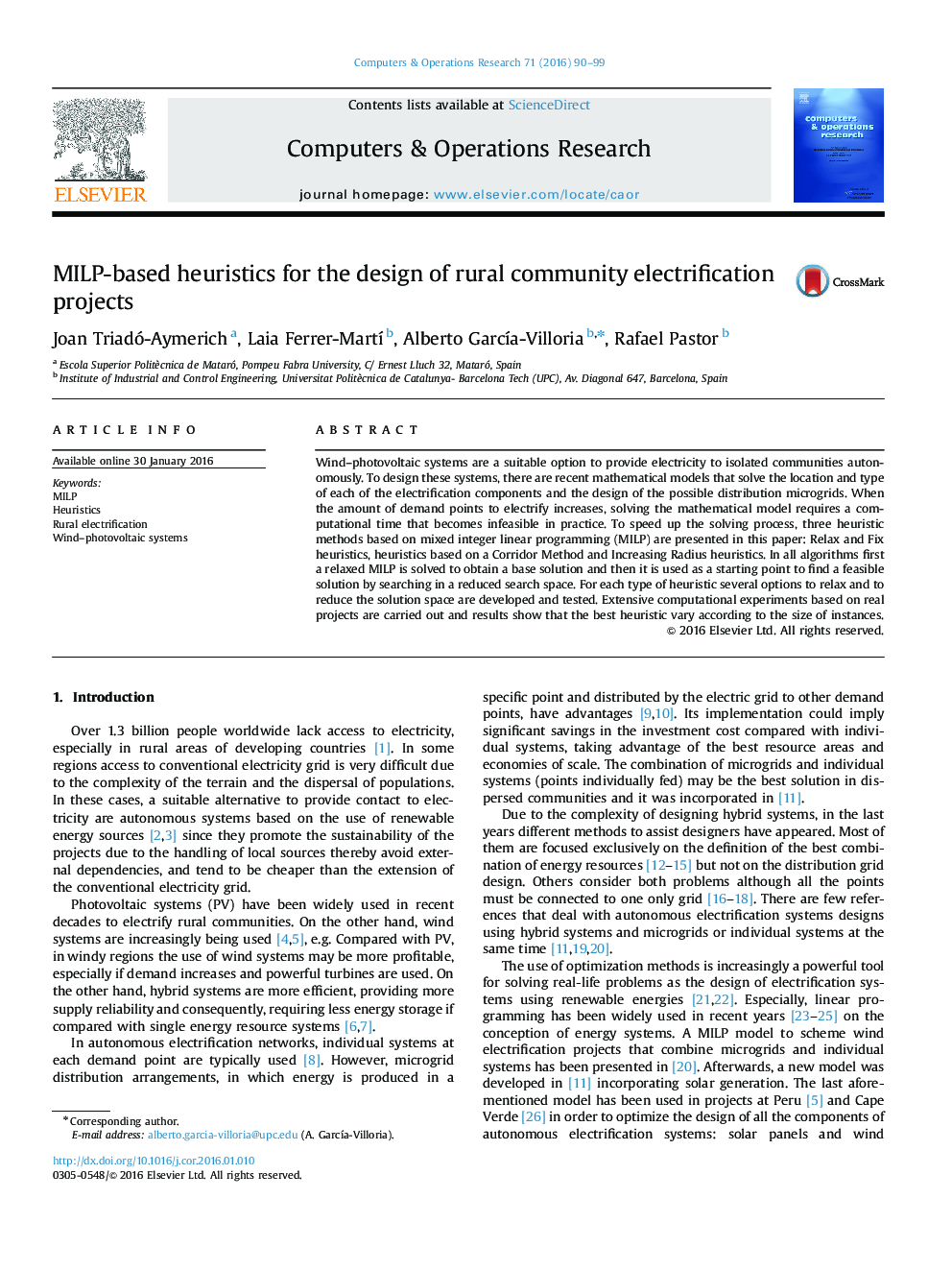| Article ID | Journal | Published Year | Pages | File Type |
|---|---|---|---|---|
| 472842 | Computers & Operations Research | 2016 | 10 Pages |
•The problem of designing electrification projects in rural communities is studied.•This problem is hard and heuristics are needed to solve non-small instances.•We propose three types of heuristics based on a mathematical model.•An extensive computational experiment is carried out to analyse its results.
Wind–photovoltaic systems are a suitable option to provide electricity to isolated communities autonomously. To design these systems, there are recent mathematical models that solve the location and type of each of the electrification components and the design of the possible distribution microgrids. When the amount of demand points to electrify increases, solving the mathematical model requires a computational time that becomes infeasible in practice. To speed up the solving process, three heuristic methods based on mixed integer linear programming (MILP) are presented in this paper: Relax and Fix heuristics, heuristics based on a Corridor Method and Increasing Radius heuristics. In all algorithms first a relaxed MILP is solved to obtain a base solution and then it is used as a starting point to find a feasible solution by searching in a reduced search space. For each type of heuristic several options to relax and to reduce the solution space are developed and tested. Extensive computational experiments based on real projects are carried out and results show that the best heuristic vary according to the size of instances.
